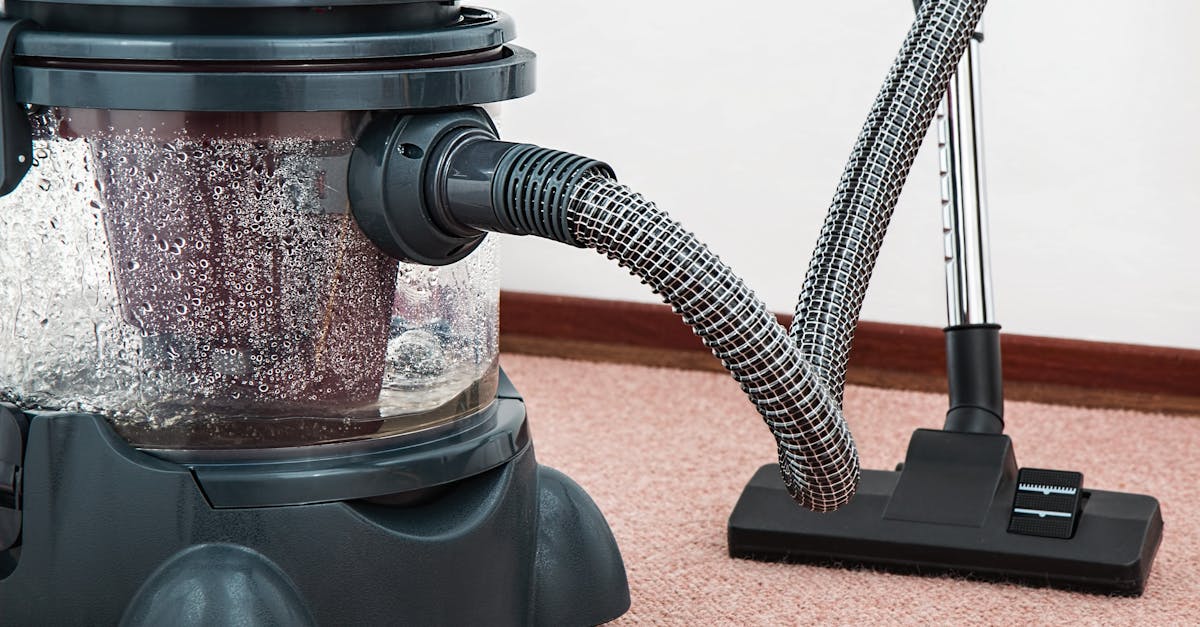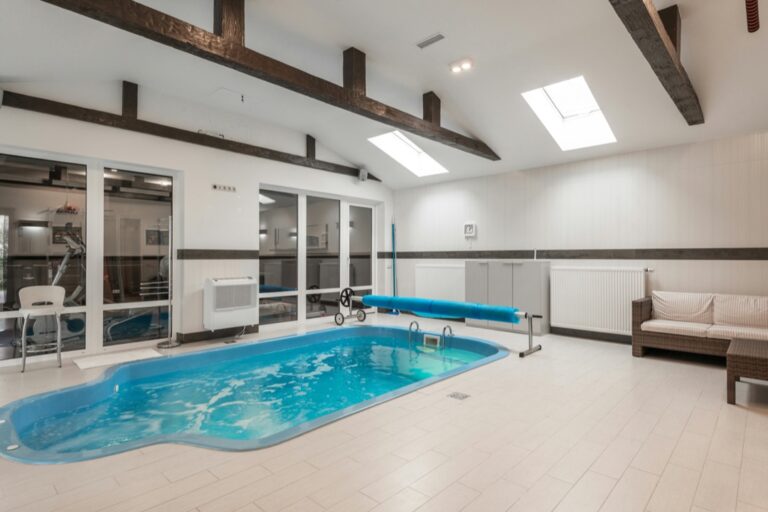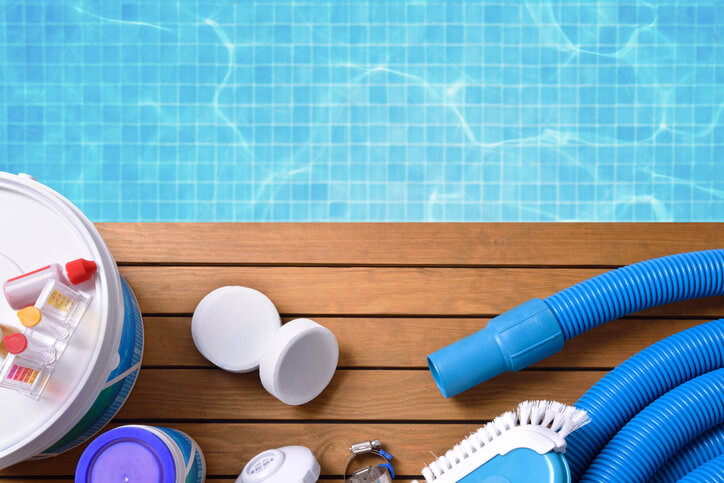7 Ways to Choose the Right Pool Cleaning Equipment That Save Time & Money
Discover how to select the perfect pool cleaning equipment based on your pool’s size, type, and maintenance needs. Find the right balance of manual tools and automatic cleaners for crystal-clear water.
Maintaining a crystal-clear swimming pool requires the right cleaning equipment, but with countless options flooding the market, choosing can feel overwhelming. From automatic pool cleaners to manual skimmers, each tool serves a specific purpose in keeping your pool water pristine and safe for swimmers. Selecting equipment that matches your pool’s size, type, and your personal maintenance preferences will save you time, money, and frustration in the long run.
The perfect pool cleaning arsenal balances effectiveness, convenience, and your budget while addressing your specific cleaning challenges. Different pool surfaces, environments, and usage patterns all influence which equipment will serve you best. Your cleaning routine should protect your investment while minimizing the chemicals needed to maintain proper water balance.
Disclosure: As an Amazon Associate, this site earns from qualifying purchases. Thank you!
Understanding Your Pool’s Unique Cleaning Needs
Each swimming pool has specific maintenance requirements based on several factors that directly impact your cleaning equipment choices.
Assessing Pool Size and Type
Pool size dramatically affects the cleaning equipment you’ll need. Larger pools require more powerful automatic cleaners with extended hose lengths and bigger filter capacities. Inground pools benefit from robotic cleaners that can climb walls, while above-ground pools work well with suction-side cleaners. Your pool’s shape—rectangular, kidney, or freeform—also determines whether you need cleaners with advanced navigation capabilities.
Identifying Common Debris in Your Area
Your local environment dictates what debris you’ll battle most frequently. Tree-heavy yards need powerful leaf vacuums and large capacity skimmers to handle falling foliage. Desert regions require cleaners that effectively remove fine sand and dust particles. Coastal areas benefit from cleaners with fine-mesh bags to capture salt residue and small debris. Identifying your predominant debris type helps select cleaning equipment with appropriate filtration capabilities and collection capacities.
Selecting the Right Manual Cleaning Tools
Telescopic Poles and Attachments
A quality telescopic pole is the foundation of your manual pool cleaning arsenal. Look for poles made from lightweight aluminum or fiberglass that extend to at least 16 feet for standard pools. Ensure the pole features comfortable grips, secure locking mechanisms, and universal attachments to connect with various cleaning tools. The ability to adjust length helps you reach different areas without straining.
Skimmers and Leaf Rakes
This adjustable metal leaf rake features an expandable head (8-17") for versatile yard cleanup, from tight spaces to large areas. Its durable construction and 30-58" adjustable handle ensure comfortable use for everyone.
Choose skimmers with fine mesh nets for capturing small debris and leaf rakes with deeper, coarser nets for larger items like leaves and twigs. The frame should be durable yet lightweight, with reinforced corners to prevent tearing during use. For maximum efficiency, select skimmers with frames that measure at least 16-18 inches wide to cover more surface area with each sweep across your pool.
Manual Vacuum Systems
Manual vacuum systems consist of a vacuum head, hose, and pole connection. Select vacuum heads with wheels or brushes appropriate for your pool surface—soft brushes for vinyl and fiberglass, stiffer brushes for concrete or plaster. The vacuum hose should be kink-resistant and long enough to reach all pool areas. Consider weighted vacuum heads that stay firmly on the pool floor for more effective cleaning.
Finding the Perfect Automatic Pool Cleaner
The Dolphin Nautilus CC Plus Wi-Fi cleans your in-ground pool (up to 50ft) with ease. Control scheduled cleanings from anywhere via Wi-Fi and enjoy thorough wall-climbing scrubbing.
Suction-Side Cleaners: Benefits and Limitations
Suction-side cleaners connect directly to your pool’s skimmer or dedicated suction line, using your existing filtration system to operate. They’re typically the most affordable automatic option, making them perfect for budget-conscious pool owners with minimal debris. However, they’ll increase the load on your pool’s filter system and may struggle with larger debris like leaves or acorns.
Pressure-Side Cleaners: When to Choose Them
The Polaris Vac-Sweep 280 efficiently cleans any in-ground pool in under 3 hours. Its powerful vacuum and large inlet capture both small and large debris, keeping your pool spotless.
Pressure-side cleaners operate using water pressure from your return line or a dedicated booster pump. They’re ideal for pools in areas with moderate to heavy debris, as they collect waste in their own filter bag rather than taxing your pool’s system. Though more expensive than suction models, they’re worth the investment if you have trees nearby or experience frequent windblown debris.
Robotic Pool Cleaners: The Ultimate Convenience
Robotic cleaners work independently from your pool’s filtration system, plugging directly into a power outlet. They deliver superior cleaning performance with smart navigation systems that efficiently cover your entire pool, including walls and waterline. While they represent the highest initial investment, they offer considerable savings in energy costs and cleaning time, making them perfect for frequent pool users seeking hands-off maintenance.
Essential Water Testing and Chemical Equipment
Test Kits vs. Digital Testers
Maintaining proper water chemistry requires reliable testing equipment. Traditional test kits use liquid reagents or test strips that change color to indicate chemical levels, providing affordable and accurate readings for essential parameters like pH, chlorine, and alkalinity. Digital testers offer precise, instant readings with minimal user error and store historical data, though they’re more expensive upfront. Choose based on your testing frequency and comfort with technology.
Chemical Dispensers and Feeders
Automatic chemical dispensers ensure consistent water treatment without daily manual additions. Floating dispensers work well for smaller pools, gradually releasing chlorine tablets as they dissolve. Inline feeders connect to your filtration system and provide more precise chemical distribution for medium to large pools. Salt chlorine generators eliminate the need for manual chlorine addition by converting salt into chlorine, offering a gentler swimming experience despite higher initial costs.
Storage Solutions for Pool Chemicals
Proper chemical storage prevents degradation and ensures safety around your pool area. Choose waterproof, lockable containers specifically designed for pool chemicals to protect against moisture and unauthorized access. Never store different chemicals together, especially chlorine and acid products, as they can create dangerous reactions. Place storage units in cool, ventilated areas away from direct sunlight and out of reach of children and pets to maintain chemical efficacy and prevent accidents.
Pool Filtration System Components
Your pool filtration system is the heart of your water quality management. Selecting the right components ensures clean, clear water while minimizing maintenance time and energy costs.
Sand, Cartridge, and DE Filter Comparisons
Sand filters offer affordability and easy maintenance, requiring backwashing every few weeks. Cartridge filters provide better filtration (10-15 microns vs. sand’s 20-40 microns) without backwashing, saving water. DE (diatomaceous earth) filters deliver superior clarity (2-5 microns) but require more maintenance and higher initial investment.
Pump Size and Energy Efficiency Considerations
Match your pump to your pool volume—oversized pumps waste energy while undersized ones strain to clean effectively. Variable-speed pumps cost more upfront but reduce energy consumption by up to 80% compared to single-speed models. Look for Energy Star certification and calculate the gallons per minute needed for your specific pool size.
Filter Maintenance Equipment
Pressure gauges are essential for monitoring filter performance—a 8-10 PSI increase indicates cleaning time. Backwash hoses (for sand filters) should be durable and properly sized. Filter cleaning solutions remove oils and minerals from cartridge filters, extending their lifespan. Invest in a quality filter wrench to open stubborn filter tanks without damage.
Budget-Friendly Equipment Strategies
Investment vs. Maintenance Cost Analysis
When budgeting for pool cleaning equipment, consider the total cost of ownership, not just the initial purchase price. Higher-quality automatic cleaners often cost more upfront but require fewer repairs and last 5-7 years longer than budget models. Compare energy consumption too – variable-speed pumps might cost $800-1,500 initially but can save $300-500 annually on electricity compared to single-speed alternatives.
Where to Splurge and Where to Save
Splurge on your filtration system and primary automatic cleaner as these directly impact water quality and reduce manual labor. Save on accessories like manual cleaning tools by purchasing multi-purpose options – a quality telescopic pole with interchangeable heads costs $40-70 but eliminates the need for multiple tools. Consider mid-range test kits ($25-40) rather than expensive digital testers unless you have specific water balance challenges.
Seasonal Deals and Discounts
Take advantage of end-of-season sales in September when retailers discount inventory by 20-40%. Sign up for pool supply store loyalty programs to receive alerts about flash sales and exclusive member discounts. Purchase cleaning chemicals in bulk during off-season promotions, saving 15-25% compared to peak season prices. Many manufacturers offer rebate programs on energy-efficient equipment, potentially saving $50-200 on qualifying purchases through utility company partnerships.
Environmentally Friendly Cleaning Options
Energy-Efficient Equipment Choices
Variable-speed pumps reduce your pool’s energy consumption by up to 80% compared to single-speed models. Look for Energy Star certified equipment that offers programmable schedules to run at lower speeds during off-peak hours. Solar-powered automatic cleaners eliminate external power needs while capturing free energy from the sun, making them perfect for sunny locations.
Eco-Friendly Chemical Alternatives
Enzyme-based cleaners break down organic contaminants naturally without harsh chemicals that damage ecosystems. Salt chlorine generators reduce chemical handling and storage while producing gentler sanitization that won’t irritate eyes or skin. Mineral systems using silver and copper ions can decrease chlorine usage by up to 50%, maintaining crystal clear water with fewer chemicals that end up in the environment.
Water Conservation Tools
Liquid pool covers create an invisible barrier that reduces evaporation by up to 40%, saving thousands of gallons annually. Rain harvesting systems collect and filter precipitation for pool top-offs, reducing reliance on municipal water supplies. Smart water level controllers prevent overfilling by automatically shutting off when optimal levels are reached, while proper backwash controllers minimize water waste during filter cleaning operations.
Conclusion: Creating Your Complete Pool Cleaning Arsenal
Choosing the right pool cleaning equipment isn’t just about keeping your pool sparkling—it’s about protecting your investment while maximizing your enjoyment. By matching your tools to your specific pool type and environment you’ll save time money and frustration.
Remember that your needs may evolve with the seasons and as you gain experience. Start with essential equipment that addresses your most common cleaning challenges then build your arsenal gradually.
The perfect pool maintenance system balances effectiveness convenience and sustainability. Whether you opt for high-tech robotic cleaners or prefer manual maintenance tools the right equipment will transform pool care from a chore into a simple routine.
With your informed equipment choices you’re now ready to enjoy crystal-clear water and more time relaxing in your perfectly maintained pool.
Frequently Asked Questions
What are the three main types of automatic pool cleaners?
The three main types of automatic pool cleaners are suction-side, pressure-side, and robotic cleaners. Suction-side cleaners are budget-friendly and connect to your skimmer. Pressure-side cleaners work with your return line and handle moderate to heavy debris. Robotic cleaners are the most advanced option with independent operation, smart navigation, and superior cleaning performance, though they come at a higher price point.
How do I choose the right pool cleaner for my specific pool type?
Consider your pool’s size, type, and shape. Larger pools need more powerful cleaners. Inground pools benefit from robotic cleaners that climb walls, while above-ground pools work well with suction-side cleaners. Also factor in the common debris in your environment and your budget. The ideal cleaner should match your pool’s surface material and cleaning requirements while fitting your maintenance preferences.
What manual cleaning tools are essential for pool maintenance?
Essential manual tools include a quality telescopic pole with comfortable grips, fine-mesh skimmers for small debris, leaf rakes with durable frames for larger items, and a manual vacuum system with a head suited to your pool surface. These tools allow for targeted cleaning between automatic cleaner cycles and help maintain areas that automatic cleaners might miss.
How often should I test my pool water?
Test your pool water 2-3 times per week during peak swimming season and once weekly during off-seasons. After heavy usage, rainfall, or adding chemicals, additional testing is recommended. Regular testing helps maintain proper chemical balance, prevents algae growth, and ensures safe swimming conditions. Both traditional test kits and digital testers can provide accurate readings for pH, chlorine, alkalinity, and other important parameters.
What’s the difference between sand, cartridge, and DE filters?
Sand filters are affordable and low-maintenance but capture only larger particles (down to 20-40 microns). Cartridge filters offer better filtration (down to 10-15 microns) without backwashing needs, saving water. DE (diatomaceous earth) filters provide superior clarity by trapping particles as small as 2-5 microns but require more maintenance. Your choice should balance filtration quality, maintenance requirements, and budget considerations.
Are variable-speed pumps worth the investment?
Yes, variable-speed pumps are worth the investment despite higher upfront costs. They can reduce energy consumption by up to 80% compared to single-speed pumps, resulting in significant savings on electricity bills. They also offer quieter operation, longer equipment life, and better filtration due to customizable flow rates. Most variable-speed pumps pay for themselves within 1-2 years through energy savings.
What eco-friendly options are available for pool cleaning?
Eco-friendly options include energy-efficient equipment like variable-speed pumps and solar-powered automatic cleaners, enzyme-based cleaners that reduce chemical usage, salt chlorine generators that minimize chemical handling, and water conservation tools such as liquid pool covers and rain harvesting systems. These environmentally responsible choices reduce your pool’s carbon footprint while often saving money on energy and water costs.
How can I save money on pool cleaning equipment?
Focus on the total cost of ownership rather than just initial price. Invest in quality filtration systems and primary cleaners while saving on accessories by choosing multi-purpose tools. Take advantage of end-of-season sales, manufacturer rebates, and retailer loyalty programs. Consider certified refurbished equipment for significant savings, and properly maintain your equipment to extend its lifespan and avoid costly replacements.
How should I store pool chemicals safely?
Store chemicals in their original containers in a cool, dry, well-ventilated area away from direct sunlight. Use waterproof, lockable containers to prevent degradation and unauthorized access. Never mix different chemicals together, and keep them away from children and pets. Store oxidizers (like chlorine) separately from acids, and always follow manufacturer guidelines for specific storage requirements to maintain efficacy and safety.
What maintenance does my pool filter system need?
Regularly check the pressure gauge for increases that indicate cleaning is needed. Clean or backwash filters according to manufacturer recommendations – typically when pressure increases 8-10 PSI above the clean reading. Replace filter media at recommended intervals: sand every 5-7 years, cartridges every 2-3 years, and DE grids every 5-10 years. Proper maintenance extends filter life and ensures efficient water filtration.








